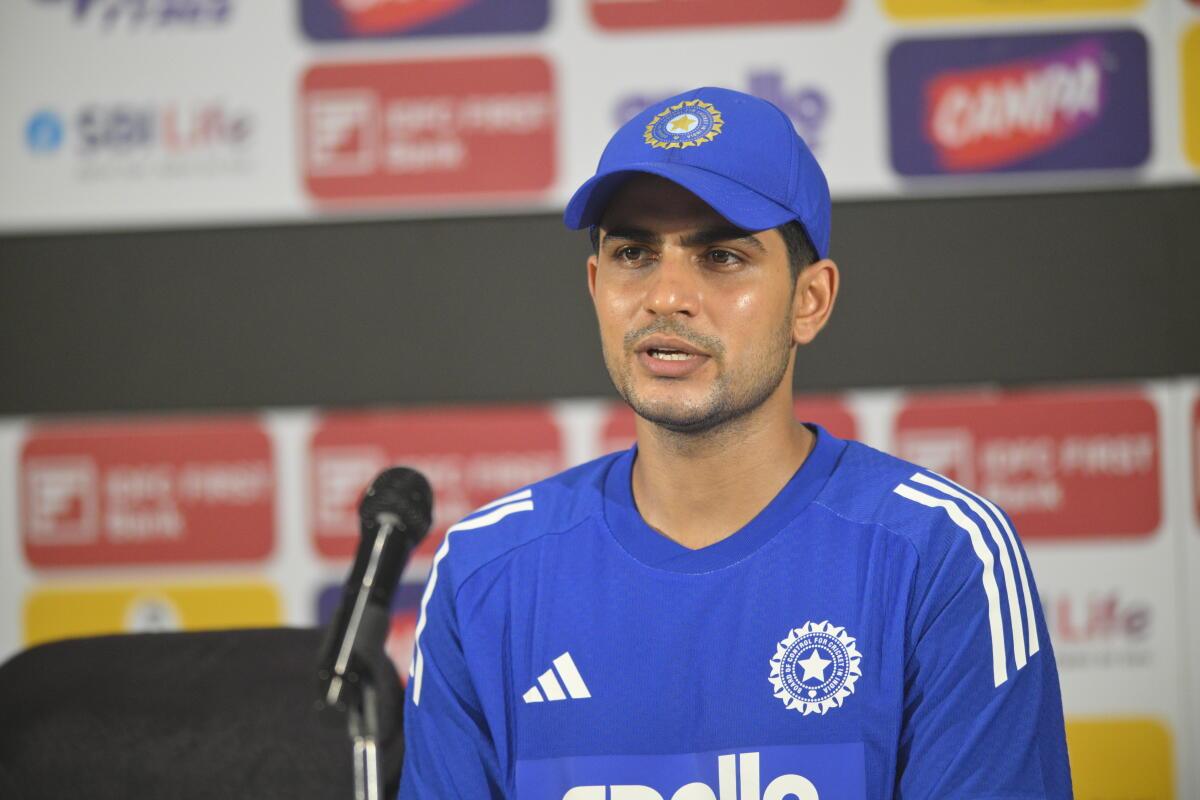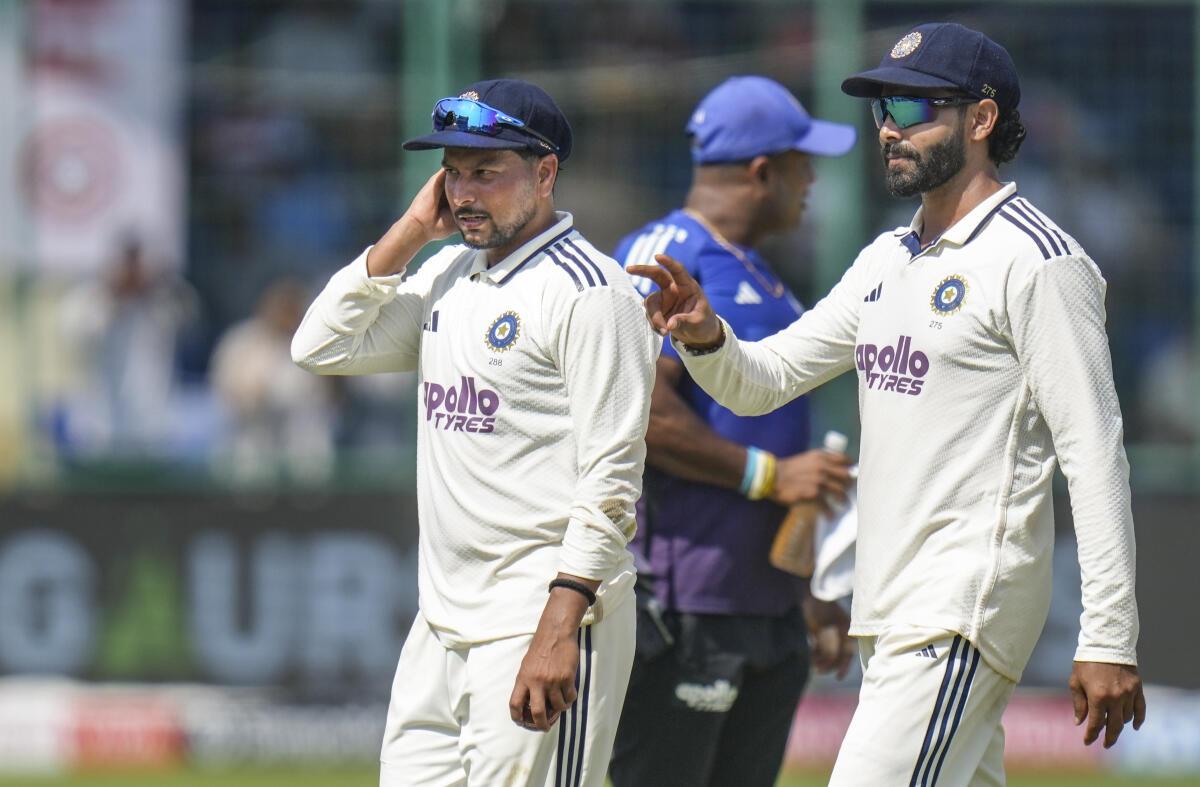It may have only taken an hour of play on the fifth day for the second Test between India and West Indies at the Arun Jaitley Stadium to reach its denouement. But the very fact that it went into the final day without rain affecting proceedings at any stage of the Test makes it a rare phenomenon in India in recent times.
For, the last time that a Test in this part of the world approached its prescribed duration without intervention from the weather was when the Indians took on Australia at the Narendra Modi Stadium in Ahmedabad in March 2023.
It was no coincidence that the surfaces for both these Tests were placid and conducive for run-making. On that occasion two-and-a-half years ago, unlike the Delhi Test earlier this week where Shubman Gill & Co. sealed a seven-wicket win to complete a series sweep, a dreary draw was the final outcome as a comatose pitch steadfastly refused to spring into life.
ALSO READ | For Ro-Ko, the future is the present
While Usman Khawaja and Cameron Green notched up hundreds in Australia’s first-innings score of 480, India’s riposte came via tons from Gill and Virat Kohli in a total of 571. By the end, the bowlers, consigned to fruitless labour through the five days, must have been relieved when the captains shook hands and settled on a stalemate.
Twin reasons
That particular surface was a result of two things. One, India had just lost to the Australians in Indore inside three days on a dust bowl, and didn’t want to be subjected to a repeat. Two, the hosts were already 2-1 ahead in the four-Test affair and knew that a draw, however humdrum, would secure not just a series win but also nudge them closer towards that year’s World Test Championship final.
Cut to proceedings this week, the pitch at the Feroz Shah Kotla was likewise docile and unresponsive. For all the defiance and application that the West Indian batters exhibited in their second innings, their consuming 118.5 overs – the first instance this year of the men from the Caribbean batting 100-plus overs – is revealing of what was prepared.

His master’s voice: Gill’s run-making exploits away in England, and how all five Tests saw grandstand finishes on the final day, may have birthed the desire in the Indian captain to play on sporting pitches
| Photo Credit:
VIJAY SONEJI
But in contrast to the duel involving Australia in Ahmedabad, where the dynamics of the series played a part in the choice of the deck, there was no such compulsion at the start of the second Test against West Indies in the national capital.
ALSO READ | Shubman Gill, and the evolution of a batter and captain
Flatbed, but…
Even in the first Test against Roston Chase’s men, coincidentally in Ahmedabad, the surface was devoid of demons and beneficial for batting. That the visitors lasted a mere 89.2 overs – 44.1 overs in the first innings and 45.1 in the second – was a damning illustration of the ability – or lack thereof – of their batting unit rather than a reflection of the curator’s handling of the pitch.
When it was India’s turn to take strike, batting once and batting big was its mantra, as it declared at 448 for five to enable victory by an innings and 140 runs.
If one were to go down memory lane to the 2000s, slow-burners formed the fabric of this format in the sub-continent. The 22-yard strip, invariably the cynosure of all eyes in the lead-up to a Test given that so much about the contest hinges on it, would usually possess banal features to begin with, and deteriorate only in the latter half of the game as the footmarks repeatedly disturbed the top layer.
Different ball game
When there was excessive turn from the outset in the 2004 Mumbai Test against Australia and in the 2008 Kanpur Test versus South Africa, they were considered anomalies that triggered very early endings.
On the eve of the series opener versus West Indies – Gill’s first assignment as skipper in India – he hinted at a return to the template of grinding out results while speaking about the sort of pitches he would desire during his tenure. It would appear to be a departure from the past decade where, under the leadership of Kohli and Rohit Sharma, rank turners were routine.
ALSO READ | Fantasy time: players refuse to play, officials sit in the stands!
“We are looking to play some hard, grinding cricket. Over the past few years, Tests in India haven’t really gone up to five days,” the 26-year-old said in his media interaction. “What we are really looking to do is play some good, hard cricket. All the Tests in England went pretty deep. We won’t be looking for any easy-way-out options.”
As Gill alluded to in his answer, India’s resolve in levelling the five-Test away series against Ben Stokes’ England, along with his own run-scoring exploits, may have convinced him of the virtues of playing on truer decks at home.
But more importantly, the 0-3 series defeat to New Zealand last year, where two of the three matches were played on sandpits, is bound to have dissuaded the think-tank from opting for pitches – at least for the time being – that make the visiting spinners appear just as menacing as its own.

A new test: The likes of Kuldeep Yadav and Ravindra Jadeja may have to work hard for their wickets, but on available evidence, they seem up for the challenge
| Photo Credit:
PTI
Doctor’s orders
Ravindra Jadeja, during the course of the Delhi Test, spelt out exactly what India wanted from the surfaces. At the end of the second day, by when it was beginning to become clear that the spinners would have to strive long and hard for breakthroughs, he said: “I’m not surprised [by the pitch] because we’ve asked for slow turn. We’ve not asked for rank turners. I think this is what we expected… that as the game progresses, the wicket will start turning slowly. We have to work hard.”
The toil went on for longer than Jadeja or any other member of the Indian team would have hoped. With West Indies following on, the Indian bowlers ended up labouring for 200 overs across both innings. For further context, it is fourth on the list of most balls faced by a visiting team in India starting 2020. At the conclusion of the game, it prompted head coach Gautam Gambhir to remark that the wicket wasn’t quite ideal for Test cricket.
ALSO READ | India needs Harmanpreet to fire in the crunch game
“I thought we could have had a better wicket here. Yes, we did get the result on day five, but again, the nicks need to carry,” he explained. “The carry wasn’t there, which was a bit alarming. I think going forward, we can get better wickets because all of us have the responsibility of keeping Test cricket alive.”
Eventually, it is only when India runs into the top teams with pivotal WTC points up for grabs that the perspectives of Gill and Gambhir on what constitutes suitable home tracks will be really tested. After all, Kohli and Rohit’s predilection for pitches offering prodigious turn was often dictated by the pressure to win Tests in their backyard to ensure progress to the WTC final.
Perhaps, India’s next assignment against South Africa in November will offer a clearer picture of the new leadership group’s disposition.
Published – October 18, 2025 08:41 am IST













Leave a Reply